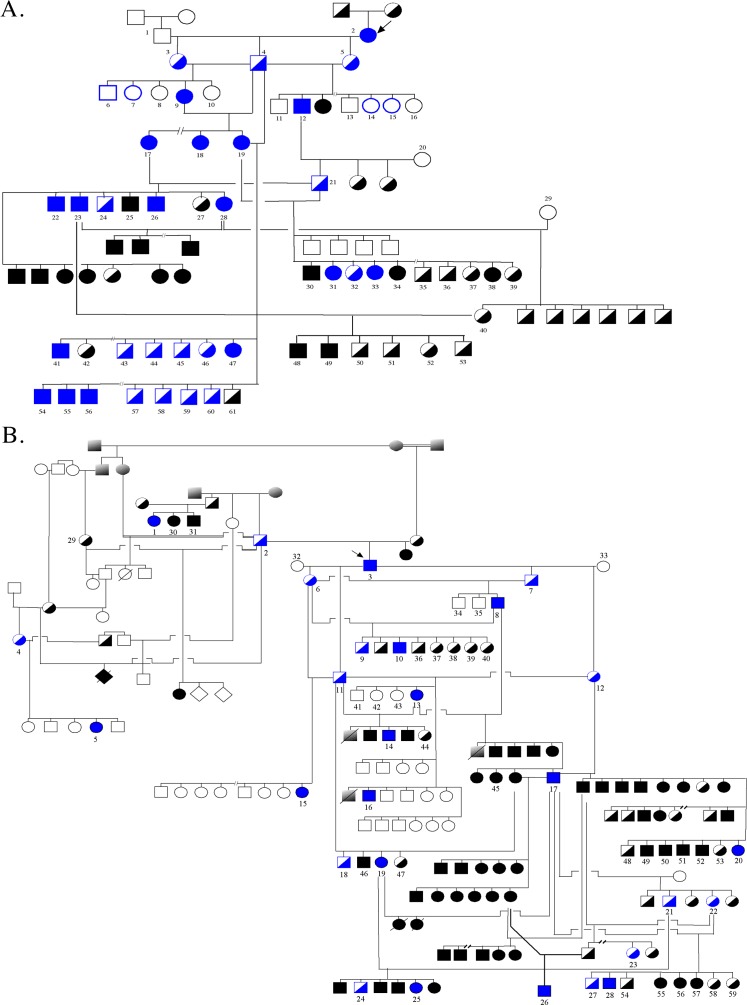Figure 1.
Canine pedigrees segregating crd1 and crd2. Solid symbols = affected; half-filled = unaffected obligate heterozygotes; empty = unaffected, either carriers or homozygous normal. Blue = animals genotyped on a SNPchip array for genome wide association study, as well as for the identified crd1 or crd2 mutation. Black numbered = dogs genotyped for informative SNPs and the mutation for linkage analysis. Arrows indicate the propositi for the mixed breed crd1 and crd2 colonies, and the respective informative pedigrees. (A) A crd1-affected AmStaff (dog 2, arrow) was bred to a homozygous normal dog (dog 1). All F1 pups were unaffected. Heterozygous offspring were intercrossed to generate informative litters. (B) A crd2-affected American Pit Bull Terrier (dog 3, arrow) was bred to 2 homozygous healthy dogs (32, 33). All F1 pups were unaffected. Heterozygous offspring were intercrossed or backcrossed to generate informative litters. Dogs 1, 2, 4, 5, 29, 30, and 31 are purebred Pit bull terrier dogs, relatives of the affected founder of the mixed-breed crd2 colony.

